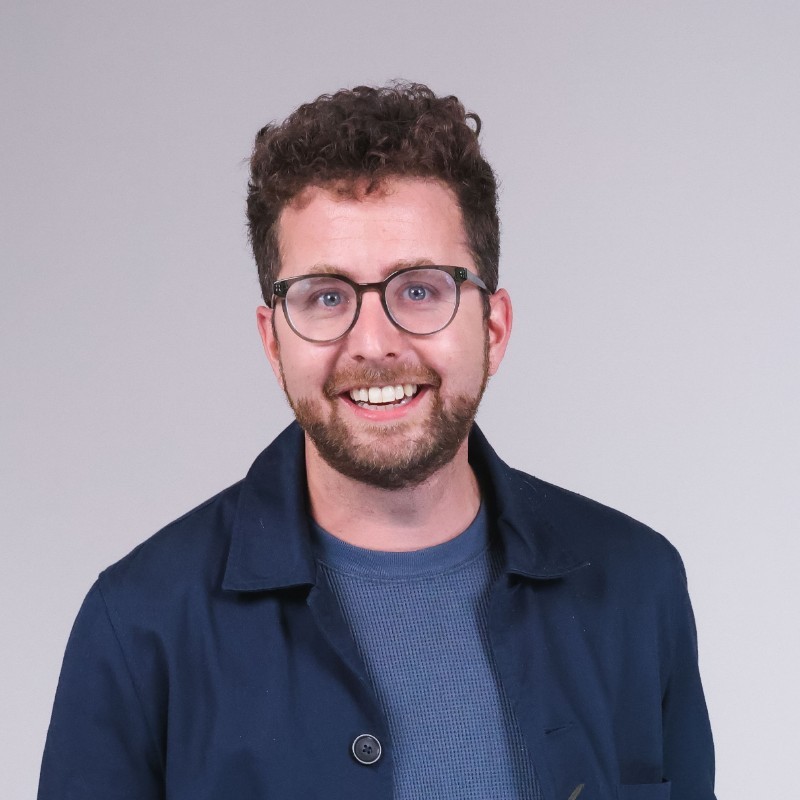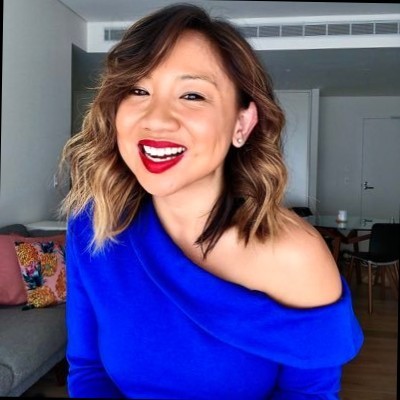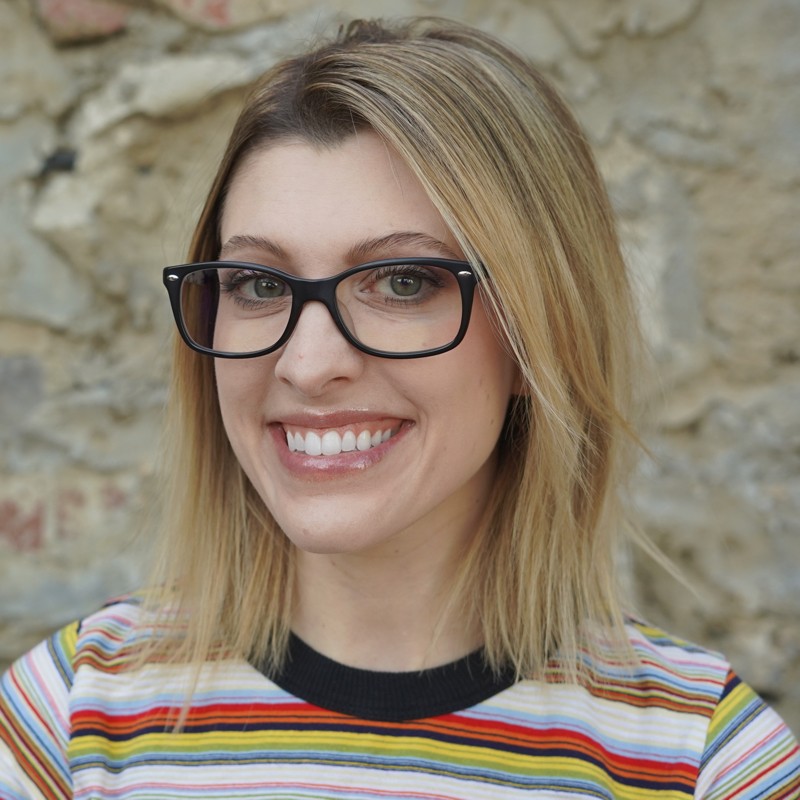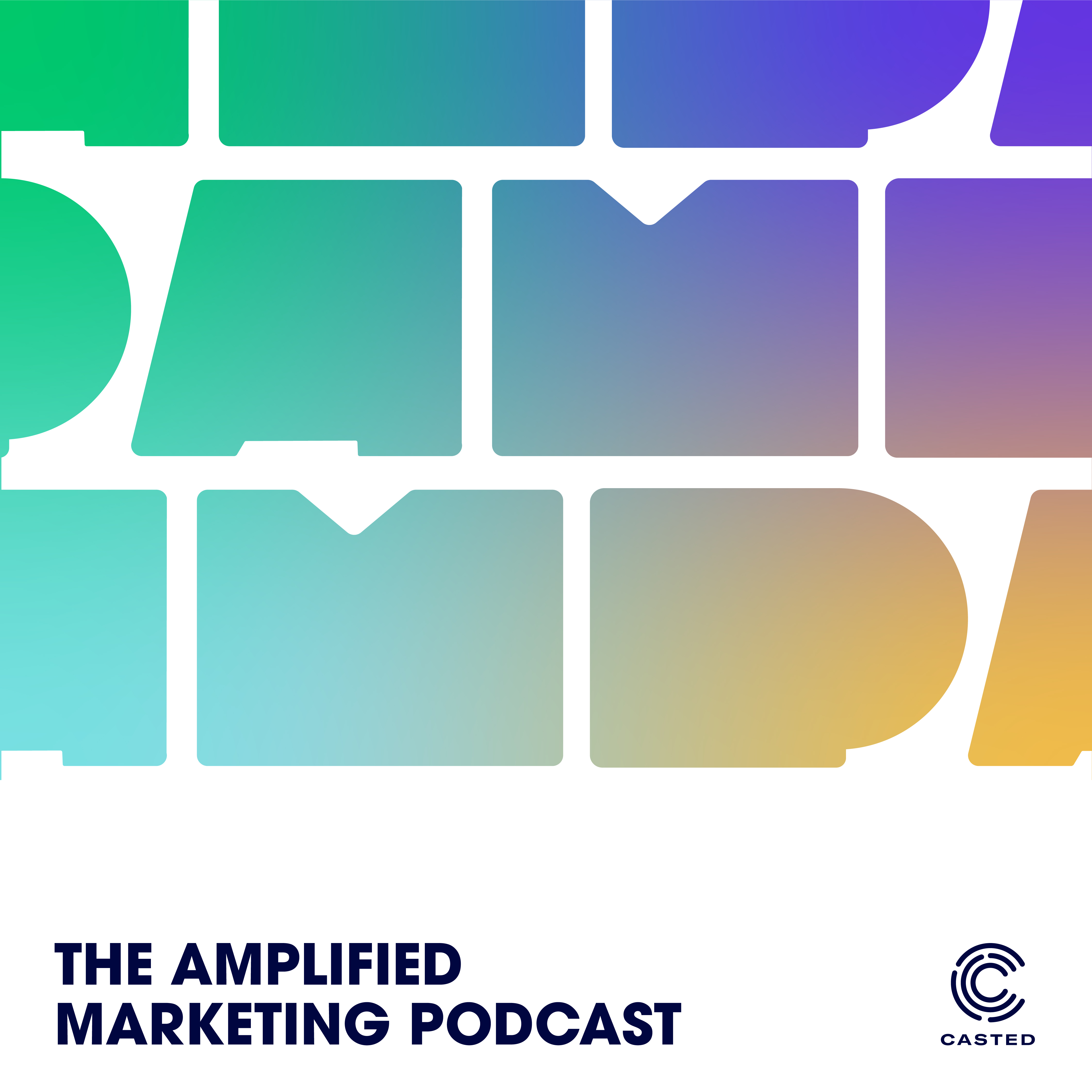How B2B Podcasts Grow Up: 3 Lessons from Launching Hit Shows at Salesforce and HubSpot
- 0.5
- 1
- 1.25
- 1.5
- 1.75
- 2
Lindsay Tjepkema: A podcast can do wonders for a brand, trust me. It can extend a company's brand to the audio format and a whole new experience, and a whole new audience, or it can serve as a hub for all their content marketing. Truly, there are no limits to what a podcast can do. And there's no shortage of examples where companies have been born or have enjoyed growth because of, yeah, a podcast. Snacks by Robinhood, Serial, TRIGGERnometry, the list is endless. But even so, many podcasts don't get off on the right foot, or they fail to get the traction at all that they want. This causes them to give up just a few episodes into their journey, the dreaded pod fade. So, what's the difference? What makes a podcast good or bad? Why do some podcasts succeed while others fail? In this first episode of the Maturity Curve series, we'll break that down. We'll answer questions like how the best podcast experts and strategists plan a podcast, what questions you should be asking yourself, your team, and your customers before you even launch a new show, and why most podcasts fail before they've even really begun. We'll talk with podcast hosts, strategists, and experts from across the world and right here in Indianapolis where Casted and I are headquartered. We'll get their take on what makes a show worth listening to so you can have confidence in growing your podcast and your business. I'm Lindsay Tjepkema, a lifelong marketer and proud CEO and co- founder of Casted, the B2B marketing platform for brand podcasters. I've teamed up with experts across the top sales and marketing teams in the world to detail each of the five stages of this maturity curve and what you can do to launch and grow a show with confidence. This is how B2B podcasts grow up, an original series from Casted. All right, let's start at the bare bones. Maybe your CEO approached you and asked you to start a podcast. It's like that TikTok question. Should we even be on TikTok? Or maybe it's your marketing team's idea. Maybe it's your idea, so should you start a podcast? For many, the answer is no. And during this podcast, I think it's my job to dissuade those who are perhaps easily dissuaded, those who are maybe on the fence about starting a podcast, from doing something that needs their love and attention and a healthy amount of resources. But, for some, for others, the brave, the daring, the committed, the answer to that question of whether or not to start a podcast is absolutely yes. But, either way, where the heck do you even begin? The former host of Salesforce's Marketing Cloudcast, Heike Young, says it's all about logistics. She sat down with me to discuss how to launch a show and what she did to grow hers to millions. Yes, millions of downloads around the world, not just Salesforce customers.
Heike Young: A lot of the thought early on was really put more toward why do we need this? What are going to be the differentiators of this show? Do we have the bandwidth? Is it a podcast that we need to create, a video series or something else? Really, just thinking through what it would take realistically I think was key in evangelizing this idea. We took several months to really go through this due diligence and I think that really helped pay off in the end in terms of making sure everybody was bought in on the fact that this wouldn't just be such a small lift, it would actually require a lot of collaboration.
Lindsay Tjepkema: Logistics are important. It's important to lay out all the responsibilities, ongoing tasks, resources needed, timelines, so that everyone understands their part before you even begin. How would your show go from paper to your customers' and audience's ears, for example? After half a decade at the helm of the show, Heike passed on the Marketing Cloudcast to Tina Rozul and Megan Collins. The pair were successful in further growing the show beyond American shores, so much so that Tina now lives and works in Salesforce Sydney. They pile on Heike's comments to say that you have to tie your podcast strategy into your company's vision and marketing or sales campaigns. Intentionality is huge, and we'll touch back on that in just a second.
Megan Hostetler: What is your plan for the year? How are you going to be measured? What are the things you're going to get done? What are the obstacles that are in the way?
Lindsay Tjepkema: I'm sure a lot of people at large companies can... Some people it's OKRs and KPIs or defining your departmental goals or your plan. So you start there. You start with big picture strategy and objectives is what you're saying. You don't just go, hit record-
Megan Hostetler: We started to just do a couple episodes and then we were like, whoa, why have we not done a V2MOM yet? But Tina, that was a lot from you too, of, we need to sit down and look at this each quarter too, or look at this on a regular basis.
Tina Rozul: Yeah. So for the V2MOM, it sounds for a vision, values, methods and obstacles. And then-
Megan Hostetler: Vision. I was like, V, what is that?
Tina Rozul: But it's just, again, being very intentional, right? So what is it that you want to achieve? What's the goal? Is it you want to increase ROI? Well, you jumped a couple of steps because you have to build your listenership. You have to continue to build trust, and you have to really, at the end of the day, share some topic or conversation that is of value to your listeners. So being very thoughtful is something that's really important. A lot of the legwork is done in the beginning, and then as time goes on, you start to evolve. And so this year, I think was massive transformation.
Lindsay Tjepkema: I've spent a few years in this podcast world as a listener, as a host, as a strategist, and as a producer. And over the years, I've gotten a behind- the- scenes view of some of the best shows that you know and love. So what sets them apart from the rest, and the rest being those who suffer from podcast fade when 75% of shows inevitably fail just after eight episodes? That's scary, right? Well, you see, it comes down to three key lessons: learning from your and others' experiences, being incredibly intentional about your show's design, and targeting the right audience. So to touch on learning from experience, I'm bringing in the content marketing gurus at HubSpot, and the founders of some of the longest lasting shows in the world. Meghan Keaney Anderson was host of HubSpot's Growth Show and their vice president of marketing, and she now leads marketing at Jasper AI.
Meghan Keaney Anderson: There's always the thing that you're initially going after, and then there are all these epiphenomenal nice consequences that happen. So your North Star is typically listenership and the audience you're going after, and you want to see that growing year over year. You want to see the audience come back when you break for a season. You want to see the engagement rates stay high all the way through. That is the beautiful thing about podcasts is when people sit down to listen to a podcast, they listen all the way through. You're getting their attention, their full attention in many cases, for 20, 30, 40 minutes. And that's so rare there. So certainly those listenership and growth numbers are what we're looking for. We're looking for distribution and access to a broader audience. But there are all sorts of secondary benefits to doing podcasts. And for me, one of the biggest ones has been for The Growth Show in particular, it's created access points to some of the most incredible business leaders and stories that I've ever come across.
Lindsay Tjepkema: You see a podcast as a science lab for your sales and marketing function. Brilliant. Heike echoes those sentiments, and there are so many great podcasts that already exist. You don't need to reinvent the wheel to launch a new show. Take notes from your favorite show. What'd they nail? What did they miss? How would you improve those shows?
Heike Young: One of the things I would really recommend doing as much as possible and as early as possible, is as much listener feedback as you possibly can. So I did some listener surveys via Google Forms. I think this was really effective, but I would've loved to do it sooner in the process if I had just more resources for getting it out there and then addressing some of the feedback. So more listener surveys. I also recommend a digital focus group, giving them sneak previews, kind of like a Patreon model for your podcast. This is something that I never did, but I've heard of some great podcasters doing it and that I really admire, folks like Jay Acunzo, who has a group of VIP listeners that he just bounces ideas off of and shares content with before releasing to the general public. And I think this is a great idea and something I should have tried. I also think it would've been a great idea to just get an email list for our show. I think email could have really been the key to unlock long- term subscribership and participation beyond just the podcast. But it was kind of hard to implement getting email addresses. There's so many opt- in requirements and rules, and it was a little bit of a bear to try to get it set up. And so that's something that I would definitely try to do more just to get people to engage off of the headphones.
Lindsay Tjepkema: Planning is when you realize the true lift of not only launching a podcast, but sticking with it for the long haul. So it's critical that you're committed and in it to win it. This is our second launch lesson: commitment and intentionality.
Tina Rozul: Be very intentional with why you want to create a podcast. Meghan and I have gotten this question a lot from different parts of Salesforce business or externally of, we're thinking about starting a podcast. And the first question we ask is, why? What is your intention? Because it's extra hours, it's extra energy. And if you don't understand why you want to do it, there's no point in going through the work. Where do you see yourself three to five years from now? If you're thinking about create an episode or a podcast, what is the vision for that? What is the future version of what you want the experience to be? And that can help you and your guiding principles, and as we mentioned, the V2MOM, because I think we can always react to things, but if there's no intention or plan or purpose behind it, it won't last. A lot of the reason that this podcast has lasted and withstood the test of time is there's so much passion and love and just genuine charisma behind what we want to share with people. And so I think thinking of that in the future and the intention behind it is something that will carry whoever's listening throughout creating an episode or creating a podcast if they wanted to.
Lindsay Tjepkema: Boom, Tina has it down to a science. And if you look at the mountain that is launching and maintaining a podcast and think it's insurmountable, I'm not here to convince you otherwise. It can be hard and it can require a lot of work. But for those who stick with it and dedicate their genuine love and energy to their show, that's where we see success. So you've got the commitment to launch a show. You're going to treat your podcast like a testing ground and experiment, right? So now what? Well, who's listening or watching? Who's engaging with your content? Because a show is pretty boring when you're blasting your episodes into the void.
Conor Wiegmann: One thing that I would just suggest is understanding the value to the listener. There is the value to the company, but you also have to provide value to the listener, like The Marketing Cloudcast, one thing that I've noticed is we rarely Salesforce products. And even though it is a Salesforce sponsored podcast, the biggest point of value for our listener is that they're hearing practitioners or people in their role, or maybe it's a CMO, come in and talk about things that they want to hear about. And it's not necessarily guided around marketing Cloud or Pardot or other tools. So I would definitely take a look at what's the value, yes, to your company, because obviously that's how you're going to keep the podcast running, but what's the value to the listener as well?
Lindsay Tjepkema: That was Tina and Megan's producer at the time, Conner Weigman, who joined the podcast as well, to share his behind- the- scenes input on how a podcast must start with the listener's goals in mind. More important than your goals are theirs. How can you give them what they want? Sam Balter, the former senior marketing manager of podcasts at HubSpot, is the king of podcast strategy. He reveals in our next segment about HubSpot's intentionality around the designing of new shows for new audiences. Namely, The Growth Show was for CEOs, an audience HubSpot hadn't previously targeted. Check it out.
Sam Balter: What we wanted to do was have more of a connection with the CEO. So it's interesting that you say your early exposure to HubSpot was marketer to marketer. It was Karen and Mike talking to Lindsay about marketing stuff. And that inspired you to go to your CEO, and I can play that conversation forward. The CEO is like, " I've never heard of HubSpot before. What are you talking about?" You were well educated on it and made a convincing sales pitch as to why you should buy it. Where we started to get to in 2015 was, well, we now had some products to sell the sales teams, and so we're selling into marketing, really well known in marketing, starting to get well known in sales. But as you're becoming a platform for the whole company, we wanted executive level exposure. We wanted CMO, CRO, CEO, COO, C- level to have heard of and know what HubSpot is, at least some high level, and have a positive brand affiliation with it. And so what we decided to do was say, okay, those folks have less time to read blogs. They're not going to go to webinars. Content specifically about marketing is not that interesting to them. What's interesting to them? Growth. And who do they want to hear from? They want to hear from their peers. So The Growth Show was a show about growth, and it was... all the interviews were only with C- level executives, inaudible, et cetera, but it was very senior people. And we had some amazing guests in the first 10 or 20. We had the founder of Tough Mudder, one of those race things, which is just an interesting story about how they built the brand and things like that. We had a CMO from Slack on. We had a bunch of CEO, CMO, CRO type of folks from really interesting companies and brands, and just had them tell their story. And that was me interviewing them in most cases. We had a couple other people that did some hosting as well. And that was something that, again, it was about what's the right format of content and type of content to reach that C- level person. And it was really the first thing we had done at HubSpot that was meant to reach the C- level.
Lindsay Tjepkema: Wow, right? The commitment to creating a show specifically for one audience is compelling, and it's important. So there you have it, three lessons in planning your show. First, your show should be fun, a lab for your marketing and sales departments, a testing ground for new strategies. Learn from other podcasts, and bring those lessons to your show, and document your own learnings as well. Second, commitment and intentionality. They're critical. You can't watch a show without them. Finally, third, targeting. Have an audience in mind already? Awesome. But if not, find out who you want to make your podcast for. Is it CEOs, IT leaders, zookeepers? It's your choice, but be really specific. Remember, who is it for and why are you doing it? Only then can you tailor your show to the right crowd, so that can be really relevant to them. So follow the success blueprint we laid out. Sure, you can launch a show and learn as you go, but will you be in it for the long haul? Do you have a succession plan in place? All these questions and more should be answered before you press record. Avoid the mistakes of so many podcasts that just really weren't well prepared, who didn't put in the time and energy to launch a show really worth listening to. Well, that's it from episode one of The Maturity Curve series on the Amplified Marketing Podcast. Stage one is almost complete, and we're talking a bit more about how to measure success and launch your show in the next few episodes spanning stage one and stage two. So tune into the next episode to learn more. Until then, thanks to our friends, Meghan Collin, Tina Rozul, Conner Weigman, Heike Young, Megan Meghan Keaney Anderson, and Sam Balter for sharing their expert advice.
DESCRIPTION
What makes a podcast good or bad? Why do some succeed where others fail?
As podcast experts, we believe it’s all behind the scenes – everything your favorite podcast did before you even knew it existed.
In the first episode of the How B2B Podcasts Grow Up series, your host and CEO of Casted Lindsay Tjepkema interviews podcast veterans and experts from Salesforce and HubSpot. They reveal the do’s and don’ts of Stage 1 of the Maturity Curve and how to be confident in your show’s positioning when you finally press record.
They also confess details of what makes a podcast successful in the eyes of both the audience and the marketing team.
Special shoutouts to Megan Collins, Tina Rozul, Conor Wiegmann and Heike Young, and Meghan Keaney Anderson and Sam Balter for discussing their experience.
Today's Guests

Sam Balter

Tina Rozul

Megan Hostetler (Collins)

Heike Young

Conor Wiegmann


